Are you looking for a way to spice up your math instruction AND meet the needs of all of your learners? Have you been thinking of starting math centers in your classroom, but not sure where to begin? If so, you’re in luck! This post will share the 8 steps to getting started with math centers, including planning your procedures and routines to launching your math centers.
Step 1 – Determine Your Purpose and Goals
Start by defining the purpose and goals for even using or having math centers as part of your math instruction.
- Do you want to reinforce the math skills you are teaching after you introduce them?
- Do you want to use math centers to continually review and spiral through math concepts?
- Do want to use this as a chance to provide differentiated instruction and fill gaps in your students’ math skills and knowledge?
- Do you want to promote collaborative learning?
Knowing your goals and purpose ahead of time will guide your planning and help you implement meaningful math center activities. You can definitely have more than one goal in mind and those goals can also change as the year progresses. For me, my goals were to continually review and spiral math skills and concepts while also filling in gaps in my student’s knowledg and skills.
Step 2 – Plan Your Procedures and Routines
The next step to successful math centers is to have a plan for procedures, routines, and expectations. Having a clear plan for procedures and routines will help your math centers run smoothly and allow you to maximize the benefits of math centers.
The good news is that they are so many different ways to run them. The bad news is that there are so many ways to run math centers that there really is no one best way that I can share.
You will need to decide how you want to run your math centers. Topics to consider are:
Student Transitions
- Will the students choose their math centers, or will you assign them? If you assign the math centers, how will you post the assigned math centers?
- Will students rotate at their own pace, or will you rotate them?
- How will the students know when center time is finished?
Student Routines
- What procedures will you have in place for setting up a center and cleaning up?
- What do the students do if they get stuck, are confused, or just don’t know what to do?
- What materials will students bring to centers?
- What do the students do if they need materials?
- What will students do when they are finished with their math center work early?
Math Center Locations
- Will students stay at their desks or go to assigned math center areas?
- Where will the centers be located?
Math Centers
- How many different math centers will you have?
- Will the students be working in pairs, in triads, as a small group, or independently, and does this vary from center to center?
Step 3 – Figure out a schedule that works best for you.
For scheduling, you need to consider how you will schedule the groups and how frequently you will use math centers for your instruction.
Here are some questions to guide you:
- How long will each rotation or center be?
- How many rotations will you have each day?
- How many days will you do math centers?
Step 4 – Decide how you will group your students.
Now, you will need to determine how you will group your students. Here are some questions or suggestions to keep in mind:
- How many students will be in each group? I try to keep my groups at no more than six students, with four being the ideal, but not always realistic. I do try to keep my groups with more struggling students smaller
- Will you group your students by similar levels or a mixture of levels? If you group by similar levels, your teacher time can be more intensive and beneficial. Also, grouping by levels allows you to differentiate centers easier. On the other side, having a mixture of students at different levels allows the students to help and learn from each other. I would recommend grouping closer together in levels if you do decide to mix levels. You don’t want your highest learner with your learner that struggles the most (unless your high learner is an excellent tutor). You want the levels to be closer together so the students can learn from and teach one another.
- Will your groups stay consistent, or will they change? I actually use two types of math grouping in my classroom, one for math centers and one for whole group instruction lessons. My math groups during math centers don’t typically change, while my math groups during whole groups days change on a daily basis. Click HERE to read a blog post where I differentiate between the two types of math groups I use in my classroom.
Step 5 – Choose the materials and types of math centers you plan to use.
This is an important one. You need to choose your materials and types of centers carefully to maximize learning and minimize behavior problems. You will also want to choose materials that are engaging, developmentally appropriate, and help you achieve the goal you have for math centers.
- Do your students struggle with computation fluency? Make sure you have at least one computation center. My students typically struggle a lot with computation, so I actually prefer to have two – one that is independent and one that is with partners.
- What levels are your students with word problems and complex math tasks? Do they need simple one step word problems or are they ready for more challenging multi-step word problems? In the beginning, I stick to one-step word problems to build their math responses and quality of work with word problems.
- Do you want your students to play games or do you prefer more independent-type activities?
- Are your students capable of quickly learning directions for new games and activities, or do you want to maximize your time by keeping the center activities simple?
Having consistent math centers helps maximize math center time since you are not explaining a new math center each week. And your students are not having to learn directions for a new center instead of focusing on the math.
There are many different consistent math centers that you can choose from. Here are some options:
- Math Task Cards
- Partner Games or Activities
- Paper and Pencil Independent Math
- Math Choice Boards
- Puzzles
- Digital Math Practice
- Find the Error Practice
- Hands-On Math – Sorts or Manipulatives
💡Click here to grab even more free math centers for grades 3-5!
Step 6 – Get organized.
To effectively organize for effective math centers, you will need three organization “systems”:
1) organization for centers not in use
2) organization for centers being used by the students
3) organization for you – all the forms and planning data
💡Click here to read a detailed post about organizing math centers: when centers are not in use and when they are being used.
💡Click here to read a post about organizing your guided math binder with free forms and templates.
Step 7 – Have a clear plan for classroom management and expectations.
Management is key when you are getting started with math centers. In Step 1, you planned out your procedures and expectations. That will be the foundation for keeping your students on task and working.
Here are my top tips for managing students during math centers:
- Have Clear Expectations and Procedures
- Model, Model, and then Model Some More
- Use Group Jobs or Roles
- Use Positive Reinforcement – Group Points
- Have a Plan in Place for Misbehavior – Alternate Work
💡Click here to read a more detailed post about the tips for managing math centers.
Step 8 – Launch your math centers.
Once you have steps 1-7 done, you are ready to launch your math centers! When you start or launch your math centers, this is the chance to:
- Model and teach students your expectations for behavior
- Model and teach your guided math and math center procedures
- Model and teach the specific math centers you have chosen to use
Once you’ve launched the centers, be sure to monitor student progress and make adjustments as needed. I recommend starting math centers in the first month of school, but definitely don’t be afraid to start them at any point in the school year.
With these steps, you’ll be well on your way to successful math centers in your classroom!
Need Math Centers?
Shop This Post
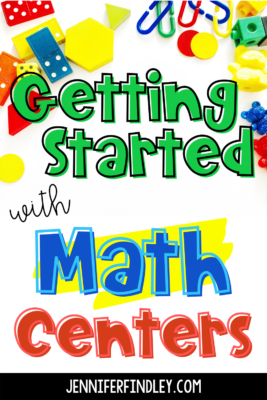

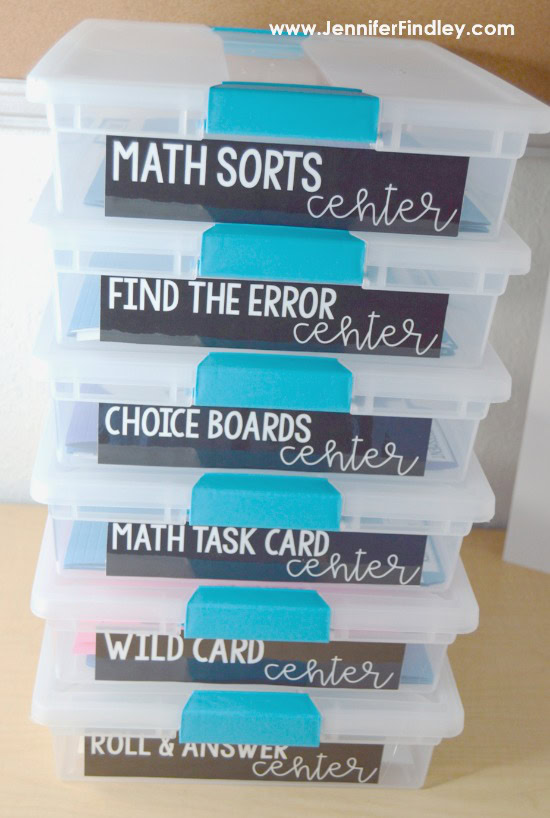
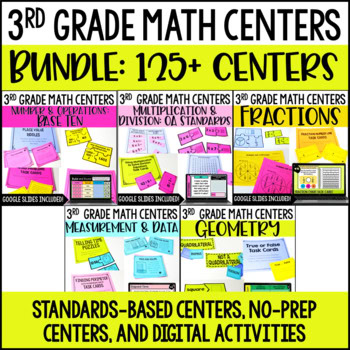
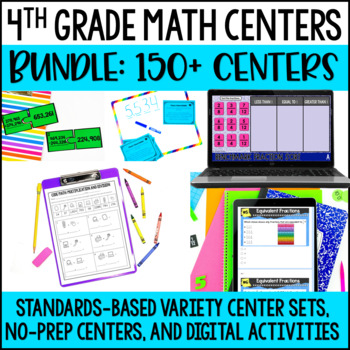
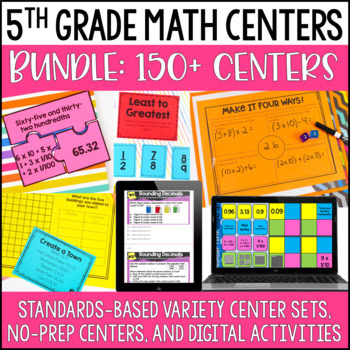






Loved this post. I’ve read a lot of posts about math centers and they typically offer activiities to do during centers. But, the questions you’ve posed are the questions that need to be addressed to make math centers effective. Thank you!!
Thank you for your comment! I was really trying to think of a way to offer support for teachers just starting out with math centers other than my providing links to resources. I am glad that the post is helpful!
I love this post! I am an instructional Math coach and am in the process of helping a new 5th grade teacher set up the workshop in his class. Where do you find the activities to use in your centers?
Hi Jackie, I create my own resources. You can see the resources I use here: https://jenniferfindley.com//2013/11/guided-math-in-upper-grades.html
Thanks!
Thank you Jennifer for this blog on math centers. It gives a general sense of what teachers should be thinking and inquiring about BEFORE starting. Planning alleviates those unexpected “surprises”.
You are so right, Detrich. Planning is so important. Math centers have to be well thought out before starting them with the students. Thanks for stopping by!
Great tips for getting started:)
I think this is great !!!!!
These are great tips! I have never tried Math Centers but I am revamping my lesson plans next year to help the students get more. I LOVE everything I have shared! I would love to see what your Math Center Area looks like and how you organize your activities. Thank you for sharing your knowledge!
Hi Terri, you can read all about how I organize my math center materials on this post: https://jenniferfindley.com//2014/07/smooth-sailing-back-to-school-tips-and.html
As far as my math center area, it is all around the room. The partner or collaborative center is always on a carpet in the front of the room. Another center is on the desktop computers. The other two centers are simply at student desks. And then my teacher center is at a horseshoe table with me.
Let me know if you have other questions. Thanks!
I’m just curious to know how you pull your students during “teacher time” especially if you don’t have them grouped by ability. For instance if you meet with your low students first but they are all working in different groups how do you meet with them without interfering with what they are working on?? Maybe I misread somewhere how you do it, but just wanted to have a better understanding for myself. It’s the one area I struggle with when it comes to grouping.
Hi Jessica, I actually do group mine by ability. You can read more about it in this section under Grouping. As I mention in the grouping section of this post, grouping by levels and mixed grouping both have advantages. However, I prefer to keep my levels closer together so I can provide more intensive teacher time support. Also, my table is part of the rotation so I don’t pull any students from their groups. You can read more about my rotations here:
https://jenniferfindley.com//2013/11/guided-math-in-upper-grades.html
Thanks!
You are the greatest! Thank you so much for your generosity and sharing your talents. Feel like a new teacher, coming down to elementary and I love learning about your best practices!
I am a fourth grade teacher. Our county has given us a basil reading text along with an math series that our pacing guides are aligned with. I am curious how many subjects do you teach each day? Do you have any post on how to incorporate Math Centers, Reading Centers, And Writing Centers all at the same time while also using the basil text ? I read about your math centers and I just can’t wrap my brain around how to do what is required by my county and have centers in more than one subject.
Thanks!
Yes I am aware it should say basal reading series rather than basil. Please forgive .
No judgment here! I am more than guilty of making my fair share of typos. 😀
Hi Amy, I have always been self contained. You can see my schedule here: https://jenniferfindley.com//2015/01/take-peak-at-my-5th-grade-self.html
I don’t do math centers every day, I only do them about two times a week. I also do not do writing centers. You can read how I teach writing here: https://jenniferfindley.com//2017/02/how-to-teach-writing-5th-grade.html
And I also have never taught with a basal text, so I am sorry but I can’t offer any tips on that.
If you are having difficulty doing more than one subject, pick the subject that you think would benefit from them the most. Incorporate centers in that subject for the rest of the school year. Then, depending on your success with that and how you like it, pick up another subject the next year or continue perfecting your routine with the original subject.
Does this make sense? Let me know if you have any other questions!
This is my 5th year teaching 5th grade. Each year as the state test approaches I feel like I am scrambling to fit all of my standards in. Do you have a curriculum map that you use that might help me see how you pace your lessons so they are all taught before May. I am not sure how I would teach all of my lessons and have time for centers too but I would really like to.
Hi Michelle, I do have one! You can find it here: https://jenniferfindley.com//2015/10/5th-grade-math-pacing-guide-free.html
I currently do centers now, but my teacher table is where I teach the lesson for the day. My students have enjoyed this method, but I struggle with how to help my students who need some reteaching. I would like to give your idea of trying whole class 3 days a week with centers on 2 days, but I struggle to get through all the curriculum now, I don’t know how I would get through it if I only did new instruction 3 days a week. I would love to hear how that works for you.
I love reading all the blog posts about how you run math and use your centres. Do you have the kids write and show their work in a duotang or notebook? If so, do you do two different ones, one for whole class instruction or the other for centres?